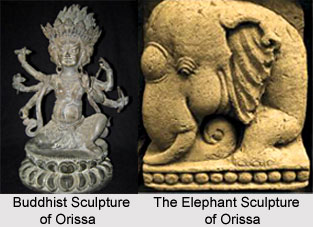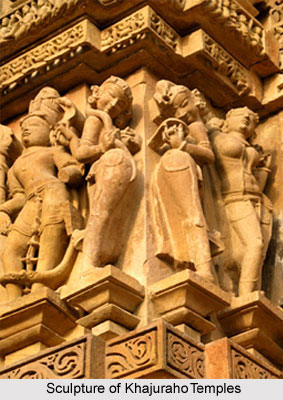The Buddhist art in sculptures can be marked with special features and distinct characters of its own. After the sculptures of Indus Valley, the next golden chapter in the history of Indian sculpture opened in the 4th century BC. When King Ashoka, adopted the Buddhist philosophy, he then immediately followed the mission to spread the teachings of this faith in all possible directions. This resulted in the creation of over 85,000 stupas or dome-shaped monuments, where the teachings of Buddhism were also engraved along the rocks and the pillars. These constructions, which served as edicts can be easily noticed in Buddhist monuments, created in the Gujarat, Bihar, Madhya Pradesh and Tamil Nadu. The monuments of above mentioned places show the vibrant art of Buddhist, these are as follows:
1. Sanchi

One of the important things of attention is that the Buddha is not represented at all through figures at Sanchi. But instead through various symbols of his teachings he is described, as it was the tradition in the early period of Buddhism. The flower of lotus represents the birth of Buddha, the big tree signifies his enlightenment, the Wheel represents his first sermon and the Stupa finally represents his nirvana or salvation. The footprints and the throne are used to denote the Buddha`s presence. This site at Sanchi also includes remains of smaller stupas, pillars and monasteries. The temples included here are as follows:
Gupta Temple: This temple, built in the 4th Century AD, is in the condition of ruins now. According to some historians, it is one of the earliest known examples of temple architecture in India. A simple flat roofed chamber characterizes it & a pillared porch constructed at front.
Temple 18: It is a chaitya hall, situated just in front of the Southern Gateway of the Great Stupa. It is comparatively recently built around 7th Century A.D and its style of architecture closely resembles with the rock-cut chaitya halls at Karla Caves in Maharashtra.
The Monastery and Temple 45: It was built during the period of the 7th and 11th centuries and more developed styles of architecture are marked from it. The doorways of this construction are ornamented, with the image of Buddha in an oval Halo.



















